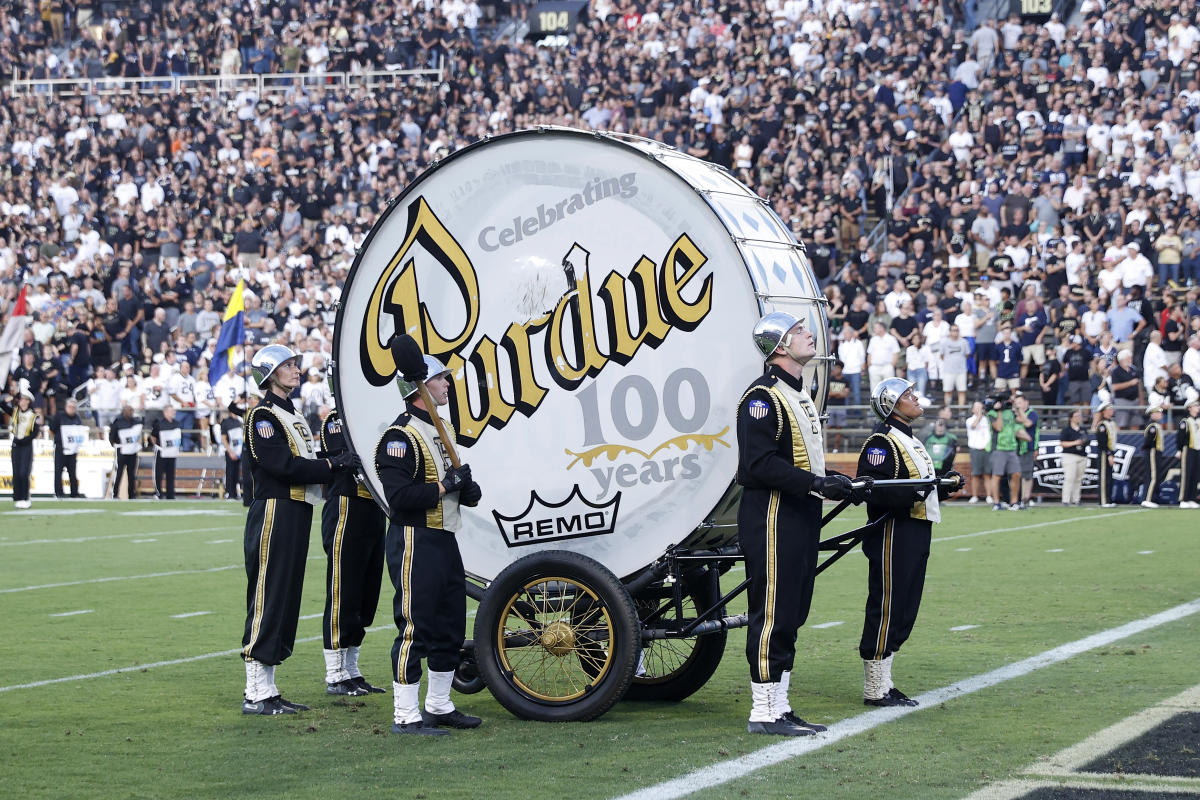
During a period of declining interest rates, some investors might be tempted to take on more risk to pursue high current income. But this approach can backfire. If you are seeking dividend income in the stock market, it might be better to focus on growing dividends over the long term.
Below is a screen of companies that have increased their dividend payouts significantly over the past five years. We have done this type of screen before. But this time we are taking a closer look, not only at the past five years but the previous five-year period.
Most Read from MarketWatch
Lower interest rates and dividend traps
Next week the Federal Open Market Committee is expected to begin a cycle of reductions to the target range for the federal-funds rate, which has been 5.25% to 5.50% since July 2023. The bond market has anticipated a series of cuts to the federal-funds rate. High demand pushed the yield on 10-year U.S. Treasury notes BX:TMUBMUSD10Y down to 3.63% early Wednesday, while three-month Treasury bills BX:TMUBMUSD03M were yielding 4.97%.
There are many stocks with dividend yields that are higher than the three-month Treasury yield. But when a stock has a very high dividend yield, there is a built-in warning. It could be a “dividend trap,” which means the high yield (and therefore relatively low share price) already indicates that the market has perceived danger. A dividend cut might be coming, which could send a stock’s price even lower. Or there may be deeper underlying problems indicated by the price decline.
When interviewed for an article about real-estate investment trusts last month, Lewis Altfest, the chief executive of Altfest Personal Wealth Management in New York, considered the highest-yielding REITs and told MarketWatch: “The 13% you are talking about is clearly not a high-quality yield. There is something going on there.”
Altfest — whose firm manages $1.7 billion for private clients — suggested adding safety factors to a screen of REIT stocks such that only four U.S. REITs passed the screen.
REITs might be considered a special asset class because they are required to pass 90% of their earnings to shareholders through dividend payments. But Altfest’s warning about very high current dividend yields can be applied to any industry. There are many income approaches — individual securities or mutual funds or exchange-traded funds — that can be considered dividend traps. You can read more about them here.
Looking back to identify dividend compounders
Back in February, we screened the S&P 500 SPX for companies that had increased their dividend payouts the most from five years earlier. Our initial screen was for stocks with dividend yields of at least 1.5% five years earlier, and then we listed the ones with the highest yields based on the current dividend payouts and what an investor would have paid for the stocks five years earlier. There were some impressive income streams that had built up, and the stocks leading the list tended to be strong overall performers.
To illustrate that screen, shares of Morgan Stanley MS at that time had a dividend yield of 3.97%. Five years earlier, the dividend yield had been 2.94%. But the dividend payout over the five years had increased so much that the yield would have increased to 8.33%, based on what an investor would have paid for the stock five years earlier. Meanwhile, the share price had more than doubled over the five years.
Digging deeper
For this new screen, we again looked back five years, but we included an analysis of the previous five-year period.
Here is how the new screen for the best dividend compounders was done:
At this point we screened the 246 remaining companies for five-year compound annual growth rates (CAGR) for dividend payments of at least 10%: 67 companies. Of those 67 companies, 47 showed a dividend CAGR of at least 10% for the previous five-year period, from Sept. 10, 2014 through Sept. 10, 2019.
So we have two lists derived from the 47 companies that passed the new screen.
First, here are the 10 stocks with the highest dividend yields based on current payouts and prices investors would have paid five years earlier:
|
Company |
Ticker |
5-year dividend CAGR |
Dividend yield on shares purchased 5 years ago |
Dividend yield on shares purchased 10 years ago |
Current dividend yield |
Dividend yield 5 years ago |
Dividend yield 10 years ago |
|
Morgan Stanley |
MS |
21.5% |
8.49% |
10.78% |
3.83% |
3.21% |
1.17% |
|
Broadcom Inc. |
AVGO |
14.9% |
7.20% |
23.82% |
1.43% |
3.60% |
1.44% |
|
Regions Financial Corp. |
RF |
10.0% |
6.25% |
9.80% |
4.48% |
3.87% |
1.96% |
|
Steel Dynamics Inc. |
STLD |
13.9% |
5.98% |
7.81% |
1.69% |
3.12% |
1.95% |
|
Extra Space Storage Inc. |
EXR |
12.5% |
5.60% |
12.19% |
3.65% |
3.11% |
3.54% |
|
Goldman Sachs Group Inc. |
GS |
19.1% |
5.57% |
6.67% |
2.57% |
2.32% |
1.22% |
|
Best Buy Co. Inc. |
BBY |
13.5% |
5.45% |
11.64% |
3.90% |
2.90% |
2.35% |
|
Kroger Co. |
KR |
14.9% |
4.96% |
4.94% |
2.45% |
2.48% |
1.27% |
|
Fastenal Co. |
FAST |
12.1% |
4.76% |
6.71% |
2.27% |
2.68% |
2.15% |
|
Snap-on Inc. |
SNA |
14.4% |
4.71% |
5.94% |
2.70% |
2.40% |
1.40% |
|
Source: FactSet |
|||||||
These stocks’ current dividend yields may be rather modest, and many were low five years ago. But all grew income streams to significant levels for dedicated shareholders.
This second table leaves the columns in the same order, but this time shows the 10 stocks with the highest dividend yields based on current payouts and prices investors would have paid 10 years earlier:
|
Company |
Ticker |
5-year dividend CAGR |
Dividend yield on shares purchased 5 years ago |
Dividend yield on shares purchased 10 years ago |
Current dividend yield |
Dividend yield 5 years ago |
Dividend yield 10 years ago |
|
Broadcom Inc. |
AVGO |
14.9% |
7.20% |
23.82% |
1.43% |
3.60% |
1.44% |
|
Lam Research Corp. |
LRCX |
14.9% |
3.97% |
12.78% |
1.26% |
1.98% |
1.00% |
|
Extra Space Storage Inc. |
EXR |
12.5% |
5.60% |
12.19% |
3.65% |
3.11% |
3.54% |
|
Best Buy Co. Inc. |
BBY |
13.5% |
5.45% |
11.64% |
3.90% |
2.90% |
2.35% |
|
Monolithic Power Systems Inc. |
MPWR |
25.6% |
3.27% |
10.94% |
0.59% |
1.05% |
1.31% |
|
Texas Instruments Inc. |
TXN |
11.0% |
4.09% |
10.84% |
2.60% |
2.42% |
2.50% |
|
Morgan Stanley |
MS |
21.5% |
8.49% |
10.78% |
3.83% |
3.21% |
1.17% |
|
Home Depot Inc. |
HD |
10.6% |
3.86% |
10.08% |
2.43% |
2.33% |
2.11% |
|
Regions Financial Corp. |
RF |
10.0% |
6.25% |
9.80% |
4.48% |
3.87% |
1.96% |
|
UnitedHealth Group Inc. |
UNH |
14.2% |
3.61% |
9.63% |
1.40% |
1.86% |
1.72% |
|
Source: FactSet |
|||||||
Five companies appear on both lists: Morgan Stanley MS, Broadcom Inc. AVGO, Regions Financial Corp. RF, Extra Space Storage Inc. EXR and Best Buy Co. BBY.
The 15 companies on the two lists have tended to be good overall performers. Since this article focuses on the growth of dividend payouts, here are five-year and 10-year price changes for the 15 stocks, excluding dividends, as well as total returns with dividends reinvested. This combined list of the two groups of high-dividend compounders is sorted by five-year price changes (again, adjusted for any splits). Price changes and returns for the S&P 500 are at the bottom:
|
Company |
Ticker |
5-year price change |
10-year price change |
5-year total return |
10-year total return |
|
Monolithic Power Systems Inc. |
MPWR |
454% |
1,754% |
476% |
1,936% |
|
Broadcom Inc. |
AVGO |
403% |
1,565% |
488% |
2,058% |
|
Steel Dynamics Inc. |
STLD |
253% |
362% |
294% |
476% |
|
Lam Research Corp. |
LRCX |
215% |
916% |
236% |
1,070% |
|
UnitedHealth Group Inc. |
UNH |
158% |
587% |
178% |
696% |
|
Morgan Stanley |
MS |
122% |
181% |
160% |
267% |
|
Goldman Sachs Group Inc. |
GS |
117% |
160% |
145% |
216% |
|
Fastenal Co. |
FAST |
109% |
196% |
139% |
288% |
|
Kroger Co. |
KR |
103% |
102% |
126% |
144% |
|
Snap-on Inc. |
SNA |
74% |
120% |
99% |
175% |
|
Home Depot Inc. |
HD |
59% |
316% |
80% |
425% |
|
Texas Instruments Inc. |
TXN |
57% |
316% |
81% |
445% |
|
Extra Space Storage Inc. |
EXR |
53% |
234% |
83% |
376% |
|
Best Buy Co. Inc. |
BBY |
40% |
198% |
67% |
318% |
|
Regions Financial Corp. |
RF |
39% |
119% |
71% |
206% |
|
S&P 500 |
SPX |
84% |
175% |
100% |
231% |
|
Source: FactSet |
|||||
Among these 15 companies:
As always, past performance guarantees nothing. A stock screen in a tool that might be useful as part of your own research. You should form your own opinion before investing in any company. Ask yourself how likely the company is to remain competitive over the next decade, at least. A good way to begin the research process is to click on the tickers.
Don’t miss: Nvidia is expected to grow quickly through 2026. These companies may grow faster.
Most Read from MarketWatch
EMEA Tribune is not involved in this news article, it is taken from our partners and or from the News Agencies. Copyright and Credit go to the News Agencies, email news@emeatribune.com Follow our WhatsApp verified Channel




